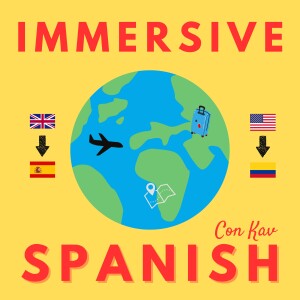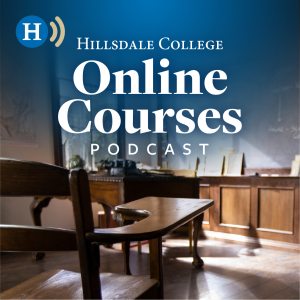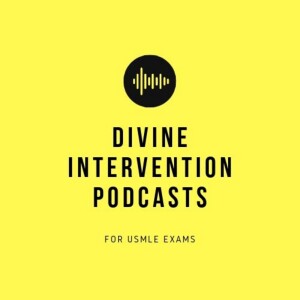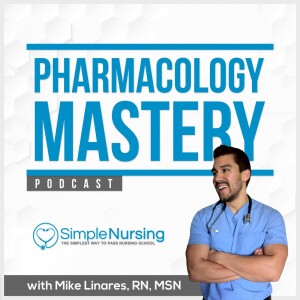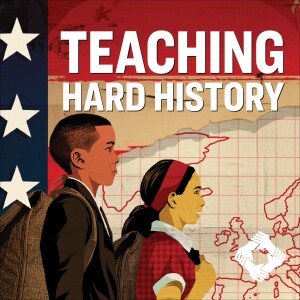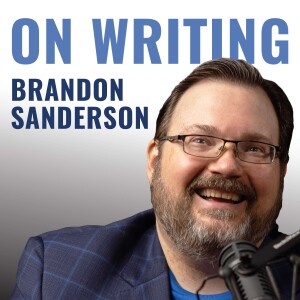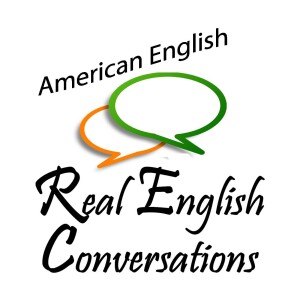

Episode List

326 | Setting Up for Success: HTP Assessments and the Glue Dilemma in CCPT
In this Q&A episode, I answer two questions from Mara in North Carolina—one about the House-Tree-Person drawing assessment and one about the use of consumables like glue and paint in the playroom. I clarify when the HTP assessment is developmentally appropriate (hint: not for preschoolers), and why even some 5-year-olds may not be ready for it. I also explain how we use these drawings at my center and how they can provide valuable insight for the parent consultation after five weeks. Then I dive into the messier side of CCPT: consumables. Should you let kids pour out entire bottles of glue? Should you pre-portion materials? Should you remove things based on age? I talk through the importance of setting up your playroom intentionally so you can remain present, accepting, and adherent to the model—even when a child turns your tape into a spider web across the room. This episode will help you reflect on your own tolerance, setup, and expectations as you equip your playroom for success. PlayTherapyNow.com is my HUB for everything I do! playtherapynow.com. Sign up for my email newsletter, stay ahead with the latest CCPT CEU courses, personalized coaching opportunities and other opportunities you need to thrive in your CCPT practice. If you click one link in these show notes, this is the one to click! Topical Playlists! All of the podcasts are now grouped into topical playlists now on YouTube. Please go to https://www.youtube.com/@kidcounselorbrenna/playlists to view them. If you would like to ask me questions directly, check out www.ccptcollective.com, where I host two weekly Zoom calls filled with advanced CCPT case studies and session reviews, as well as member Q&A. You can take advantage of the two-week free trial to see if the CCPT Collective is right for you. Ask Me Questions: Call (813) 812-5525, or email: brenna@thekidcounselor.com Brenna's CCPT Hub: https://www.playtherapynow.com CCPT Collective (online community exclusively for CCPTs): https://www.ccptcollective.com Podcast HQ: https://www.playtherapypodcast.com APT Approved Play Therapy CE courses: https://childcenteredtraining.com Facebook: https://facebook.com/playtherapypodcast Common References: Cochran, N., Nordling, W., & Cochran, J. (2010). Child-Centered Play Therapy (1st ed.). Wiley. VanFleet, R., Sywulak, A. E., & Sniscak, C. C. (2010). Child-centered play therapy. Guilford Press. Landreth, G.L. (2023). Play Therapy: The Art of the Relationship (4th ed.). Routledge. Landreth, G.L., & Bratton, S.C. (2019). Child-Parent Relationship Therapy (CPRT): An Evidence-Based 10-Session Filial Therapy Model (2nd ed.). Routledge. https://doi.org/10.4324/9781315537948 Benedict, Helen. Themes in Play Therapy. Used with permission to Heartland Play Therapy Institute.

325 | Art of the Session: Why Reflecting Content Keeps You Engaged Without Taking Over
In this episode of the Art of the Session series, I focus on the skill of Reflecting Content—what it is, when to use it, and how to do it well. Reflecting content helps us stay connected and engaged in the session even when we’re not active participants in the child’s play. I explain how this skill allows children to feel heard and understood by summarizing, paraphrasing, or condensing what they say—without parroting or interrupting. I walk through practical examples, including how to handle talkative children, how to reflect longer stories without overwhelming detail, and how to vary your tone and pace to match the child’s energy. I also talk about the importance of personality in the playroom and how your natural way of engaging with people can (and should) still be part of your CCPT work—always within the bounds of neutrality and congruence. The next Six-Figure Play Therapist cohort starts August 28th and will meet Thursdays @ 5pm. Visit https://sixfigureplaytherapist.com/ for more information and to schedule a Discovery Call with me to discuss if this program is a good fit for you. PlayTherapyNow.com is my HUB for everything I do! playtherapynow.com. Sign up for my email newsletter, stay ahead with the latest CCPT CEU courses, personalized coaching opportunities and other opportunities you need to thrive in your CCPT practice. If you click one link in these show notes, this is the one to click! Topical Playlists! All of the podcasts are now grouped into topical playlists now on YouTube. Please go to https://www.youtube.com/@kidcounselorbrenna/playlists to view them. If you would like to ask me questions directly, check out www.ccptcollective.com, where I host two weekly Zoom calls filled with advanced CCPT case studies and session reviews, as well as member Q&A. You can take advantage of the two-week free trial to see if the CCPT Collective is right for you. Ask Me Questions: Call (813) 812-5525, or email: brenna@thekidcounselor.com Brenna's CCPT Hub: https://www.playtherapynow.com CCPT Collective (online community exclusively for CCPTs): https://www.ccptcollective.com Podcast HQ: https://www.playtherapypodcast.com APT Approved Play Therapy CE courses: https://childcenteredtraining.com Facebook: https://facebook.com/playtherapypodcast Common References: Cochran, N., Nordling, W., & Cochran, J. (2010). Child-Centered Play Therapy (1st ed.). Wiley. VanFleet, R., Sywulak, A. E., & Sniscak, C. C. (2010). Child-centered play therapy. Guilford Press. Landreth, G.L. (2023). Play Therapy: The Art of the Relationship (4th ed.). Routledge. Landreth, G.L., & Bratton, S.C. (2019). Child-Parent Relationship Therapy (CPRT): An Evidence-Based 10-Session Filial Therapy Model (2nd ed.). Routledge. https://doi.org/10.4324/9781315537948 Benedict, Helen. Themes in Play Therapy. Used with permission to Heartland Play Therapy Institute.

324 | Art of the Session: Tracking Behavior—The Skill You Can Always Use In Any Given Moment
In this episode of the Art of the Session series, I focus on one of the most foundational yet misunderstood CCPT skills: tracking behavior. I explain what it is, when to use it, and why it matters—even when it seems like “nothing is happening” in the playroom. I walk through examples of how to track behavior using simple, child-centered language, and I break down the structure of an effective tracking response. This episode is full of reminders about staying present, engaged, and adherent to the model, even during quiet or ambiguous moments in session. I also talk about the importance of remaining verbally active throughout the play session, even if you’re not physically participating in the play. Tracking behavior helps the child feel seen without feeling watched, which protects the therapeutic relationship and keeps us aligned with the CCPT model. Whether you’re a new or seasoned therapist, this episode reinforces the idea that mastering the basics—especially tracking—is essential to doing great work. PlayTherapyNow.com is my HUB for everything I do! playtherapynow.com. Sign up for my email newsletter, stay ahead with the latest CCPT CEU courses, personalized coaching opportunities and other opportunities you need to thrive in your CCPT practice. If you click one link in these show notes, this is the one to click! Topical Playlists! All of the podcasts are now grouped into topical playlists now on YouTube. Please go to https://www.youtube.com/@kidcounselorbrenna/playlists to view them. If you would like to ask me questions directly, check out www.ccptcollective.com, where I host two weekly Zoom calls filled with advanced CCPT case studies and session reviews, as well as member Q&A. You can take advantage of the two-week free trial to see if the CCPT Collective is right for you. Ask Me Questions: Call (813) 812-5525, or email: brenna@thekidcounselor.com Brenna's CCPT Hub: https://www.playtherapynow.com CCPT Collective (online community exclusively for CCPTs): https://www.ccptcollective.com Podcast HQ: https://www.playtherapypodcast.com APT Approved Play Therapy CE courses: https://childcenteredtraining.com Facebook: https://facebook.com/playtherapypodcast Common References: Cochran, N., Nordling, W., & Cochran, J. (2010). Child-Centered Play Therapy (1st ed.). Wiley. VanFleet, R., Sywulak, A. E., & Sniscak, C. C. (2010). Child-centered play therapy. Guilford Press. Landreth, G.L. (2023). Play Therapy: The Art of the Relationship (4th ed.). Routledge. Landreth, G.L., & Bratton, S.C. (2019). Child-Parent Relationship Therapy (CPRT): An Evidence-Based 10-Session Filial Therapy Model (2nd ed.). Routledge. https://doi.org/10.4324/9781315537948 Benedict, Helen. Themes in Play Therapy. Used with permission to Heartland Play Therapy Institute.

323 | What to Do When Time Is Up But the Child Isn’t Regulated Yet
In this episode, I respond to a question from Crystal, a school-based clinician in Minnesota, about how to end sessions when a child is emotionally dysregulated. Especially in settings like schools, where transitions can be abrupt and expectations are high, it can be tricky to support a child who’s deeply engaged in therapeutic work but needs to return to class. I walk through the importance of a decompression process and share how we build transition time into our sessions through rituals like handwashing and snack choices. I also talk about clinical judgment—recognizing when a child might need a few extra minutes or a gentler route back into their day—and how we can advocate with caregivers and teachers to protect that emotional space. If you’ve ever faced the challenge of ending a session while a child is still “in it,” this episode offers validation, strategy, and a clear CCPT-aligned approach. PlayTherapyNow.com is my HUB for everything I do! playtherapynow.com. Sign up for my email newsletter, stay ahead with the latest CCPT CEU courses, personalized coaching opportunities and other opportunities you need to thrive in your CCPT practice. If you click one link in these show notes, this is the one to click! Topical Playlists! All of the podcasts are now grouped into topical playlists now on YouTube. Please go to https://www.youtube.com/@kidcounselorbrenna/playlists to view them. If you would like to ask me questions and case consultations directly, check out www.ccptcollective.com, where I host two weekly Zoom calls filled with advanced CCPT case studies and session reviews, as well as member Q&A. You can take advantage of the two-week free trial to see if the CCPT Collective is right for you. Ask Me Questions: Call (813) 812-5525, or email: brenna@thekidcounselor.com Brenna's CCPT Hub: https://www.playtherapynow.com CCPT Collective (online community exclusively for CCPTs): https://www.ccptcollective.com Podcast HQ: https://www.playtherapypodcast.com APT Approved Play Therapy CE courses: https://childcenteredtraining.com Facebook: https://facebook.com/playtherapypodcast Common References: Cochran, N., Nordling, W., & Cochran, J. (2010). Child-Centered Play Therapy (1st ed.). Wiley. VanFleet, R., Sywulak, A. E., & Sniscak, C. C. (2010). Child-centered play therapy. Guilford Press. Landreth, G.L. (2023). Play Therapy: The Art of the Relationship (4th ed.). Routledge. Landreth, G.L., & Bratton, S.C. (2019). Child-Parent Relationship Therapy (CPRT): An Evidence-Based 10-Session Filial Therapy Model (2nd ed.). Routledge. https://doi.org/10.4324/9781315537948 Benedict, Helen. Themes in Play Therapy. Used with permission to Heartland Play Therapy Institute.

322 | Art of the Session: The CCPT Therapist’s Shortlist—11 Responses That Work In Any Given Moment In A Session
In this Art of the Session episode, I walk through one of the most empowering and clarifying truths about CCPT: there’s a finite list of responses we use in session—and mastering those is enough. I outline what I consider to be the 11 foundational responses we pull from when working with children in the playroom, including the reflective responses, the four pillars, and several secondary but essential techniques like “I wonder” statements and narrative commentary. Rather than feeling overwhelmed or unsure about what to say, this episode is meant to lift the pressure off and help you anchor yourself in the structure and simplicity of the model. When you’re truly practicing CCPT, you’re not guessing or winging it—you’re selecting intentionally from a consistent, skillful set of responses that uphold the relationship and give children the space to heal. If you’ve ever felt uncertain in session, this episode is your reminder: You already have everything you need. You just have to stay within the framework. PlayTherapyNow.com is my HUB for everything I do! playtherapynow.com. Sign up for my email newsletter, stay ahead with the latest CCPT CEU courses, personalized coaching opportunities and other opportunities you need to thrive in your CCPT practice. If you click one link in these show notes, this is the one to click! Topical Playlists! All of the podcasts are now grouped into topical playlists now on YouTube. Please go to https://www.youtube.com/@kidcounselorbrenna/playlists to view them. If you would like to ask me questions directly, check out www.ccptcollective.com, where I host two weekly Zoom calls filled with advanced CCPT case studies and session reviews, as well as member Q&A. You can take advantage of the two-week free trial to see if the CCPT Collective is right for you. Ask Me Questions: Call (813) 812-5525, or email: brenna@thekidcounselor.com Brenna's CCPT Hub: https://www.playtherapynow.com CCPT Collective (online community exclusively for CCPTs): https://www.ccptcollective.com Podcast HQ: https://www.playtherapypodcast.com APT Approved Play Therapy CE courses: https://childcenteredtraining.com Facebook: https://facebook.com/playtherapypodcast Common References: Cochran, N., Nordling, W., & Cochran, J. (2010). Child-Centered Play Therapy (1st ed.). Wiley. VanFleet, R., Sywulak, A. E., & Sniscak, C. C. (2010). Child-centered play therapy. Guilford Press. Landreth, G.L. (2023). Play Therapy: The Art of the Relationship (4th ed.). Routledge. Bratton, S. C., Landreth, G. L., Kellam, T., & Blackard, S. R. (2006). Child parent relationship therapy (CPRT) treatment manual: A 10-session filial therapy model for training parents. Routledge/Taylor & Francis Group. Benedict, Helen. Themes in Play Therapy. Used with permission to Heartland Play Therapy Institute.
You may also like
Create Your Podcast In Minutes
- Full-featured podcast site
- Unlimited storage and bandwidth
- Comprehensive podcast stats
- Distribute to Apple Podcasts, Spotify, and more
- Make money with your podcast


